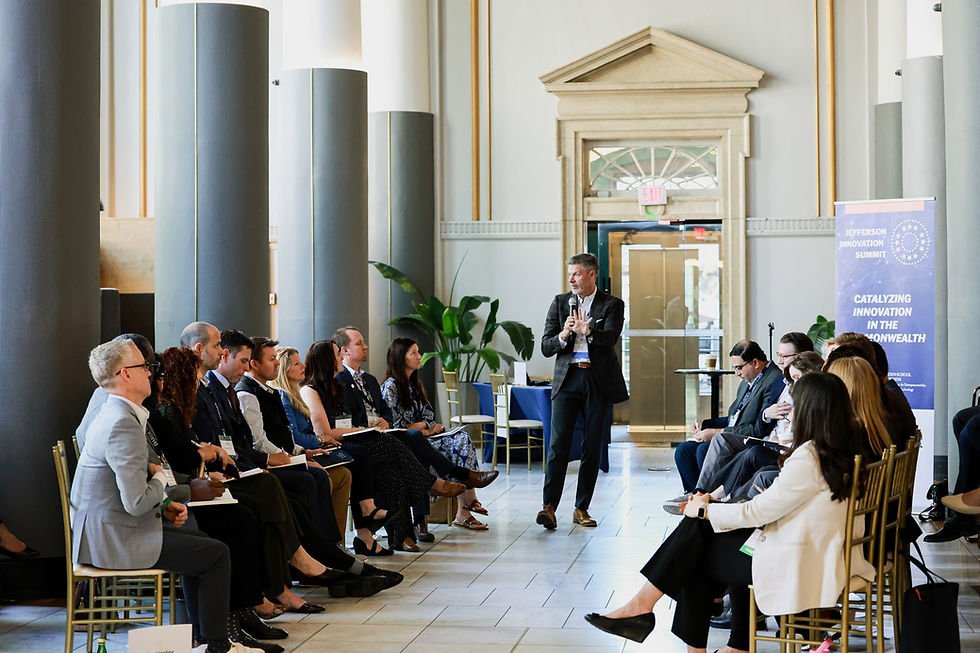7 Tips for Implementing Public Art in Your City
- Nov 11, 2017
- 2 min read
by Kaleigh Watson:
This past spring, leaders in the arena of public art gathered at Tom Tom Founders Festival’s Hometown Summit to share insights on the intersection of art and community. Monica Diodati, project manager at Better Block, Nicole Mullet, executive director of Arts Now, Marie Schacht, director of the Hopscotch Design Festival, and Dan Schwartz, founder of the Wunderkammer Company discussed the importance of public arts projects. Below are some of their most important tips and insights on how to implement effective public art in smaller US cities.
Be Yourself. It’s important for city planners and officials to work with the existing tone and culture of a town or city, especially for initial projects.
Tom Tom has played a role in transforming underutilized spaces around Charlottesville into works of art as part of the City as Canvas project, which will be in its fifth year come 2018. In staying true to the vibes of Cville, local and regional muralists with an understanding of Charlottesville were invited to participate in this collaboration. For example, the photo at left honors the working class legacy of Charlottesville’s historic Belmont neighborhood.
If a Tree Falls in a Forest. But how can cities help make public art more accessible? Panelists had many suggestions for this. For example, a website indexing all of the art in a city or a map of art hot-spots can help citizens get out and enjoy the creativity their city has to offer. Another idea would be offering tours by local artists or perhaps bike-tours of local art; both are great ways not only to showcase artwork, but also to help people engage more widely with the city as a whole.
Art is Essential. Public art should be understood as an intrinsic part of the physical landscape of a city, and planning for public art should be just another aspect of city planning.
The City Art Bus component of Tom Tom’s City as Canvas initiative challenges the boundaries of conventional art by encouraging artists to submit designs that could end up decorating one of Charlottesville’s city busses for one year. This reimagining of a mundane, every day experience – riding the bus – can instead be seen by commuters as stepping on to a mobile mural on their way around the city. At right is the winning dinosaur-themed design from the 2017 competition.
Use What You’ve Got. Graffiti, often seen as a blemish on city landscapes, can be a valuable expression of community voice. In fact, not utilizing this form of expression, or covering over graffiti with “real” art, can suffocate or whitewash a city’s culture. Find ways to incorporate graffiti into a city’s artistic landscape. For example, in cases of graffiti as expression, officials can choose “selective non-enforcement” of vandalism laws, to allow the work to be seen. This not only allows for graffiti art to reach a wider audience, but also helps project the voices of a city to its own members.
Who’s It For? But whether we’re considering graffiti art, planned murals, or another type of public art installation, they all have an important commonality. Places and spaces around a city can be “activated” by public artworks. That is, art installations can help people reinterpret a given space, seeing and engaging with it in a new way.
Start Small. Once a city has established some public arts projects, planners can see how subsequent projects begin to grow more organically. This sort of growth can generate confidence and power for the city, and can lend sustainability to public arts projects over time.
Connecting with Context. An important final takeaway from this session is to remember that art and the public don’t exist in separate vacuums. Art is a broad, fluid concept. It isn’t something that exists only behind the doors of a museum.
Bringing art to the public is as easy as commissioning a mural on an empty wall or letting graffiti flourish with some oversight. This nurturing of public art can help create and reinforce the culture and identity of a city, making it a more enjoyable place to live. During the 2017 Tom Tom Festival, a grassroots event dubbed the “Art Attack” brought artists out of the studio and into the streets. Festival goers could watch the creative process in action as local painters, illustrators, and sculptors made art in the midst of other festival activities in Lee Park.




